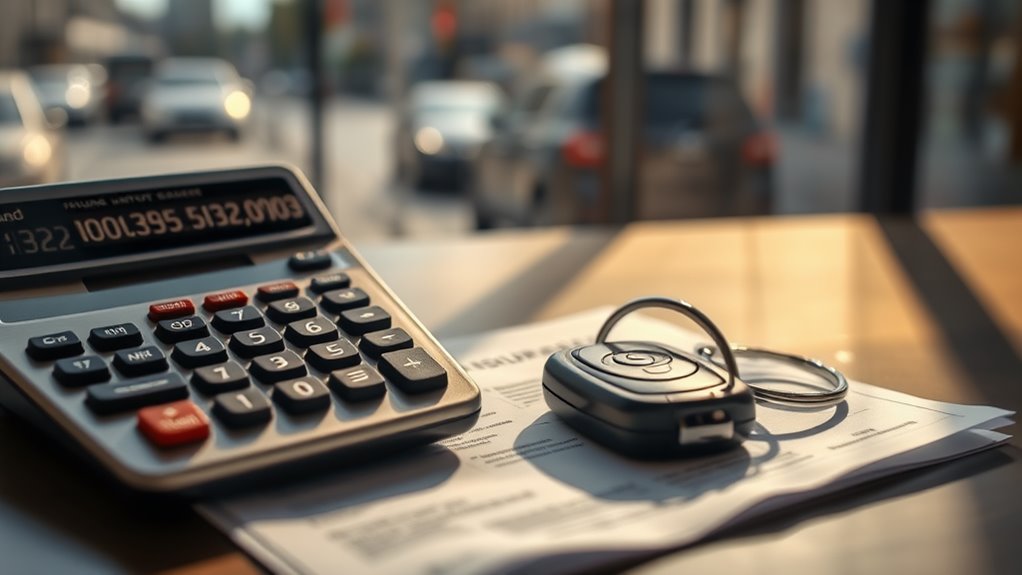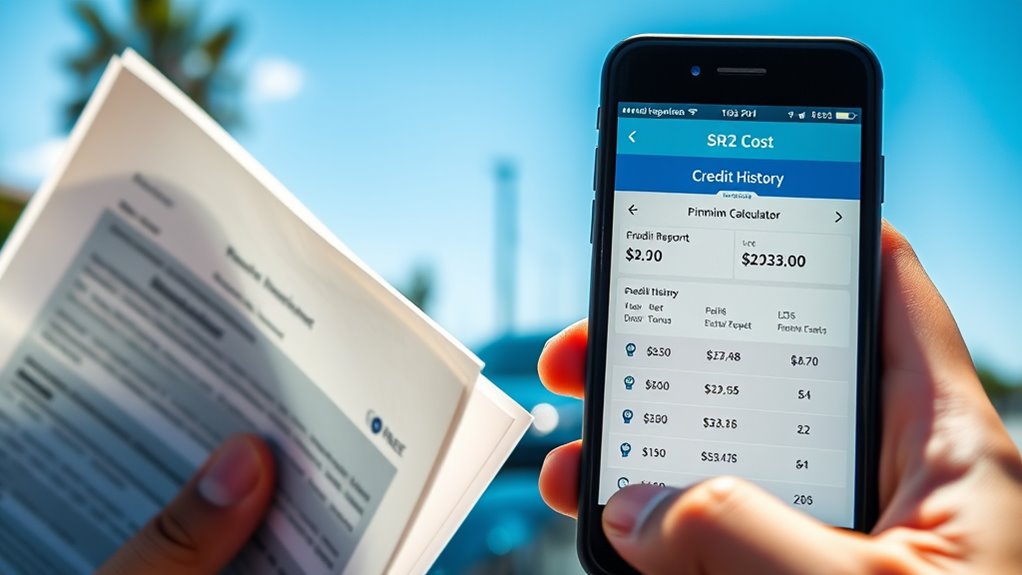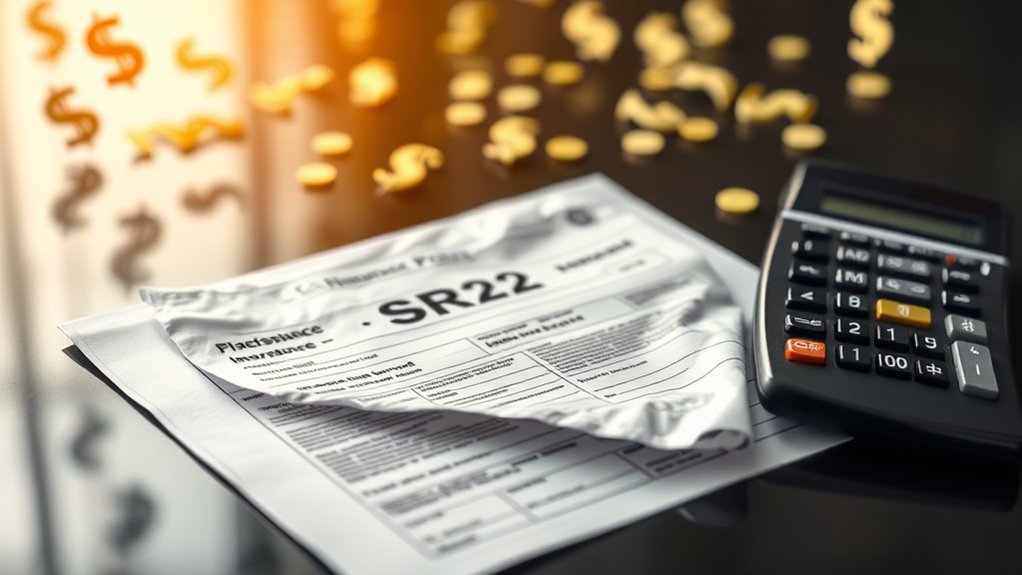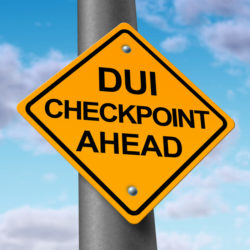If you find yourself needing an SR22, it's crucial to understand how it can affect your insurance costs. An SR22 filing often results in considerably higher premiums, influenced by various factors like your driving record and vehicle type. These impacts can extend beyond the filing period, complicating your options for affordable coverage. As you explore the nuances of these factors, you may discover surprising ways to mitigate costs.
Key Takeaways
- SR22 requirements significantly raise insurance premiums, often increasing costs by 20% to 60% due to perceived risk.
- Serious driving infractions, like DUIs or multiple violations, lead to higher SR22 rates due to increased risk assessment.
- The type of vehicle affects SR22 insurance costs, with sportier or high-value cars attracting more expensive premiums.
- A poor credit history can result in higher SR22 premiums, while good credit can help lower costs significantly.
- Maintaining SR22 for 3-5 years can lead to long-term premium increases, even after the SR22 requirement ends.
Increased Insurance Premiums for SR22 Holders

When you need an SR22, you can expect your insurance premiums to rise considerably due to the higher risk classification associated with this requirement.
While the SR22 filing fee is relatively low, typically between $15 and $100, the significant cost arises from the increased premiums you'll face. Factors like the reason for needing an SR22, your age, and location can substantially influence these costs. Younger drivers or those in high-risk areas often incur higher rates. Additionally, the duration of the SR-22 requirement can impact how long you will be paying elevated premiums, as longer periods may lead to sustained higher costs. In California, SR-22 insurance is mandatory for drivers who have had serious driving violations, which can further affect premium rates.
Additionally, not all insurance providers handle SR22 filings the same way, so exploring various options is essential. Maintaining a clean driving record during the SR22 period can help mitigate long-term premium increases and ease the financial burden of this requirement over time.
Influence of Driving Record on SR22 Rates
A driver's history can greatly impact SR22 insurance rates, as insurers assess risk based on past behaviors. Serious infractions, such as DUIs, dramatically elevate SR22 premiums, reflecting the perceived risk of future incidents.
Additionally, accumulating multiple traffic violations can lead to increased costs, as insurers view this as a pattern of risky behavior. In states with a points system, each infraction can add to your total points, further affecting rates.
At-fault accidents, especially those occurring without insurance coverage, also raise premiums. It's crucial to recognize that state-specific requirements and penalties can vary, influencing your overall SR22 costs.
Ultimately, maintaining a clean driving record can help lower future rates after your SR22 period ends.
The Role of Vehicle Type in SR22 Insurance Costs
Vehicle type considerably impacts SR22 insurance costs, influencing both premiums and coverage requirements.
For instance, commercial vehicles often demand higher liability limits, leading to increased insurance costs compared to personal vehicles. The value and risk profile of your vehicle also play a significant role; sportier or higher-value cars can attract more expensive premiums.
If you frequently drive rented or borrowed vehicles, you'll need a non-owner SR22 policy, which may differ in cost. Additionally, state regulations dictate minimum liability requirements, further affecting your SR22 expenses.
To minimize costs, consider the type of vehicle you own and how you use it, as these factors will ultimately determine your insurance premiums and coverage needs.
Impact of Credit History on SR22 Premiums

Although many factors influence SR22 premiums, credit history plays a pivotal role in determining rates. Insurance companies use credit scores as a risk assessment tool, linking them to the likelihood of claims. Consequently, drivers with good credit scores typically enjoy lower SR22 premiums compared to those with poor credit.
Here are some key points to reflect upon:
- Payment History: Consistent payments enhance your credit score and reduce premiums.
- Credit Utilization: Lower utilization rates signal financial stability, positively affecting rates.
- Length of Credit History: A longer history can lead to better insurance terms.
- Types of Credit Accounts: A diverse range of credit accounts may improve your score, lowering your SR22 costs.
Improving your credit score can greatly lower your SR22 premiums over time.
Duration of SR22 Filing and Its Cost Implications
When maneuvering through the complexities of SR22 requirements, understanding the duration of the filing can greatly affect your financial obligations. Typically, the SR22 filing lasts between three to five years, depending on the severity of your offense.
Initially, you'll incur a one-time filing fee ranging from $15 to $100, with most fees falling between $15 and $25. However, this cost is just the beginning; your insurance premiums may increase considerably due to your high-risk status.
Factors such as the nature of your violation, your driving record, age, and location all influence your overall insurance costs. Furthermore, the long-term implications on your driving record may continue to affect your premiums even after the SR22 requirement is lifted.
Comparing Quotes to Find the Best SR22 Rates
Maneuvering the SR22 insurance landscape requires careful comparison of quotes to secure the best rates. By analyzing various factors, you can make informed decisions that suit your needs.
Here are some key considerations:
- Company Variety: Compare quotes from both large and regional insurers to find the best options.
- Driving History: Your past offenses can greatly influence your SR22 rates, so keep this in mind.
- Coverage Levels: Verify each quote reflects similar coverage levels for accurate comparisons.
- Online Tools: Utilize online platforms for quick quotes, streamlining your search process.
Long-Term Effects of SR22 on Insurance Costs

The long-term effects of carrying an SR22 can greatly impact your insurance costs, particularly after a DUI or other serious offenses.
You may face increased premiums, ranging from 20% to 60%, due to your insurer perceiving you as a higher risk. This financial burden can strain your budget, affecting savings and healthcare.
Additionally, maintaining SR22 coverage for 3-5 years is vital to avoid penalties, including license suspension. Limited insurance options may also hinder your ability to find affordable rates, as fewer companies cover high-risk drivers.
Even after the SR22 period ends, your driving record will continue to influence your insurance costs, making it essential to maintain a clean record to mitigate long-term financial impacts.
Conclusion
In conclusion, maneuvering SR22 insurance can feel like walking a tightrope. While it may seem like a necessary step toward regaining your driving privileges, the financial repercussions can be significant. By understanding the various factors that influence your premiums, from your driving record to the type of vehicle you own, you can make informed decisions. Remember, shopping around for quotes can help you find a silver lining amidst the clouds of increased costs associated with SR22 requirements.


